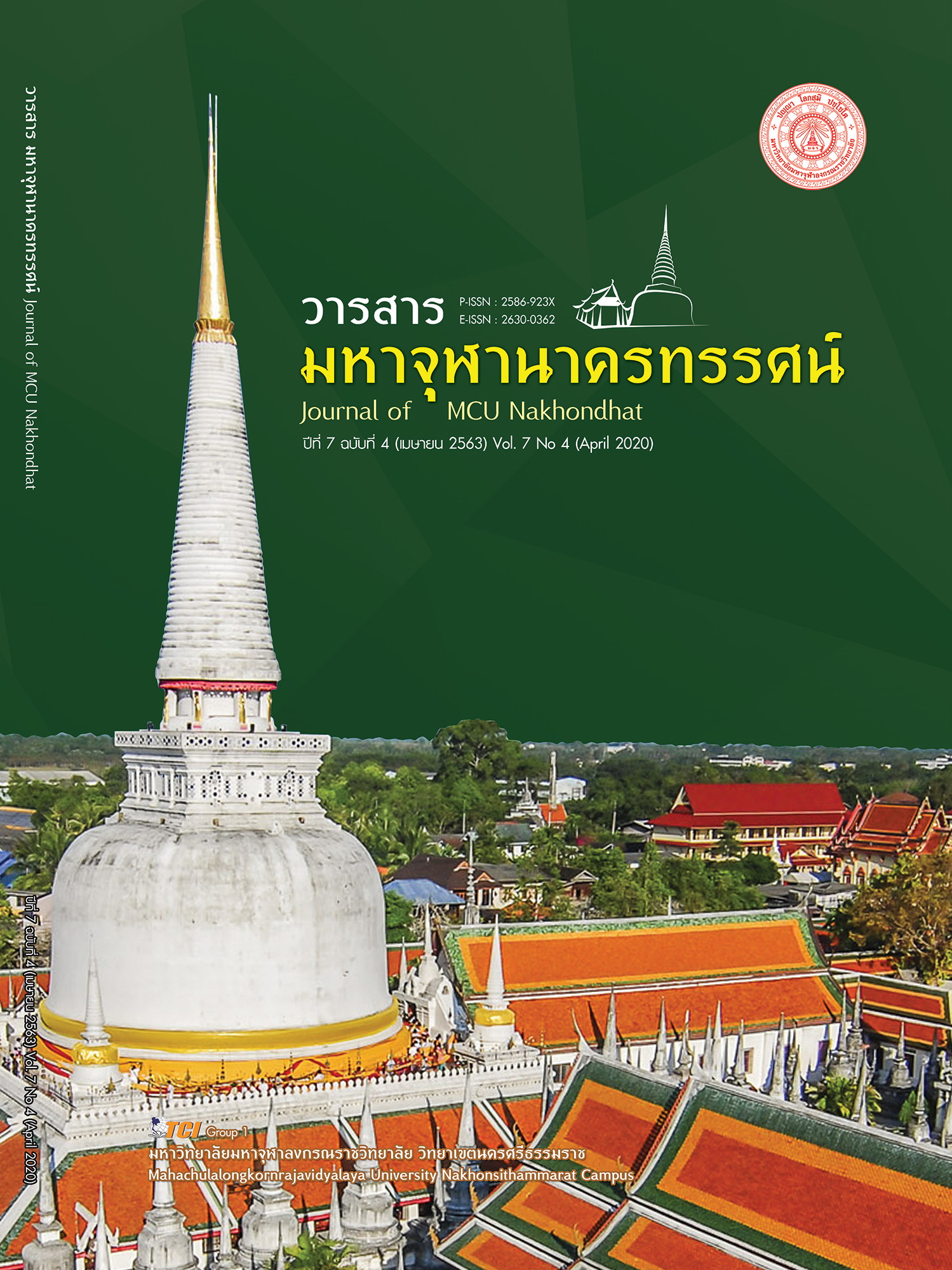THE CONTEXT – BASED LEARNING MODEL IN NURSING ADMINISTRATION PRACTICUM SUBJECT
Main Article Content
Abstract
The purpose of this study was to gain 1) The Context – Based Learning Model 2) an understanding the experience of the context – based learning model, and 3) to compare learning outcome Thai Qualification Framework for Bachelor of Nursing Science between before and after learning by context based learning in nursing administration practicum subject. Research design was employed in 4 phases, which were 1) assessing of the current situation 2) developing the model of context- based learning 3) Implementing the model of context- based learning, and 4) evaluating the model. Triangulation mixed method designs was used. This research was Qualitative approach with hermeneutic phenomenology technique based on the philosophical views as framework. The key informants by purposive selection on criterion mentioned, they consisted of 2 groups: 16 4th nursing students and 8 nurse mentors. Data were collected using document review, focus group and in – depth interview. Quasi – experimental research was used. The population in Quantitative approach was 88 4th nursing students that trained nursing administration practicum subject. Data were analyzed using frequency, percentage, paired t – test and Hermeneutic Phenomenology analysis.
The results showed that: The context-based learning model consists of 4 steps: 1) Determine the situation stage 2) Research stage 3) Educational exchange stage and 4) Application stage. The context- based learning experience of learners composed of 3 themes, which were 1) Practice smoothly 2) Apply the work approach to the future and 3) Learning that responds to learning outcomes. Learning outcome scores of Thai Qualification Framework for Bachelor of Nursing Science after the context- based learning was higher than before learning at .01 significantly level. The suggestion of this study was the instructors may be applying the context- based learning in nursing teaching and learning for students’ work experience and expected learning outcome.
Article Details
References
ไพฑูรย์ สินลารัตน์. (2558). บทบาทของครูในอนาคต: เตรียมผู้เรียนให้สอนตนเองได้ต่อไป. วารสารมนุษยศาสตร์และสังคมศาสตร์ มหาวิทยาลัยราชพฤกษ์, 1(1), 1-8.
จรัสศรี เพ็ชรคง. (2556). ปัจจัยเชิงสาเหตุที่มีอิทธิพลต่อผลลัพธ์การเรียนรู้ตามมาตรฐานการอุดมศึกษาสาขาการพยาบาล ของนักศึกษาวิทยาลัยพยาบาลบรมราชชนนี จักรีรัช. ใน โครงการวิจัย ภาควิชาการพยาบาลอนามัยชุมชนและจิตเวช. วิทยาลัยพยาบาลบรมราชชนนี จักรีรัช.
นิทรา กิจธีระวุฒิวงษ์ และภูดิท เตชาติวัฒน์. (2555). การจัดการเรียนโดยใช้บริบทเป็นฐาน: กลยุทธ์ สู่ความสำเร็จของนโยบายโรงพยาบาลส่งเสริมสุขภาพตำบล. วารสารพยาบาลสาธารณสุข, 26(1), 87-89.
ประสาท เนืองเฉลิม. (2557). การเรียนรู้วิทยาศาสตร์ในศตวรรษที่ 21. มหาสารคาม: อภิชาตการพิมพ์.
พัชรมัย นิ่มละออ. (2559). ผลการใช้แนวคิดการเรียนรู้โดยใช้เป็นฐานที่มีต่อความเข้าใจ มโนทัศน์ชีววิทยาของนักเรียนมัธยมศึกษาตอนปลาย. ใน วิทยานิพนธ์ครุศาสตร มหาบัณฑิต สาขาวิชาการศึกษาวิทยาศาสตร์. จุฬาลงกรณ์มหาวิทยาลัย.
ศุภกร สุขยิ่ง และคณะ. (2560). การจัดการเรียนรู้แบบใช้บริบทเป็นฐานร่วมกับการ ใช้ข่าวเป็นสื่อ เรื่อง สภาพสมดุลเพื่อพัฒนาการรู้เรื่องวิทยาศาสตร์ของนักเรียน ชั้นมัธยมศึกษาปีที่ 4. วารสารวิชาการศึกษาศาสตร์, 18(2), 31-44.
De Jong, O. (2006). Context - based chemical education: How to improve it? Chemical Education International, 8(1), 1-7.
Lincoln, YS. & Guba, EG. (1985). Naturalistic Inquiry. Bevery Hills, CA: Sage.
McLellan, H. (1996). Situated Learning Perspectives. Englewood Cliffs: NJ Educational Technology Publications.
Miles, M. B. & Huberman, A. M. (1994). Qualitative data analysis. (2nd ed.). Thousand Oaks, CA: Sage.
Shreeve. (2008). Beyond the Didactic Classroom: Educational Models to Encourage Active Student Involvement in Learning. Journal of Chiropractic, 22(1), 23-28.


